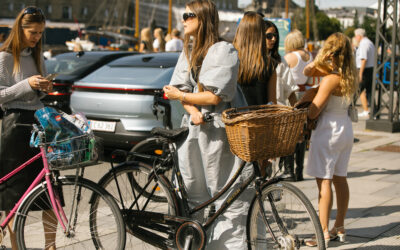The Impact of COVID-19 on markets across Europe and the US: A guide for lifestyle brands
At Vocast we have a team of researchers that curates lists of relevant contacts across 9 different markets: Denmark, Sweden, Norway, France, Germany, The United States, The United Kingdom, Belgium and The Netherlands. With the recent COVID-19 pandemic, we wanted to compile relevant information across the markets we cover to asses the current situations, give insightful advice and recommend best practices for lifestyle brands.
In these times, understanding what these different markets are going through is crucial. Decisions now need to be taken more carefully in order to maintain good business relationships. Brands must re-think the way they communicate by being creative, cost-effective and sensible during these difficult times and our lifestyle researcher team is here to help should you have any doubts on how to proceed.
The different confinement rules in European and American markets
Whether partial or total, many countries across the globe have imposed lockdowns and decided to slow down their lifestyles. Most countries including Denmark, Germany, France, and Belgium have decided quite early on to enforce complete confinements, while the UK has been slightly behind the rest of European countries in their announcements of strict regulations. But, they are now very much in place and are beginning to be followed. On the other hand, Sweden and the Netherlands have taken up a completely different approach and opted for a more lenient method.
Further west, the US is dealing with the virus in a different way from these European countries in terms of public and social lockdown. The confinement rules may vary from one state to another as no national lockdown has been announced yet. According to the Wall Street Journal, as of the end of March: “more than half of U.S. states have imposed lockdown measures restricting gatherings and social contact, and suspending the operations of thousands of businesses.” (1)
Markets in total lockdown: Denmark, Belgium, France, Germany, and the UK
For these countries, the general rule is to stay home and to keep social distance. All schools and universities have closed down, and the majority of employees, in both the private and public sectors are either advised or obliged to work from home. This excludes people with jobs that are vital to the proper functioning of society. Restaurants and cafés are closed but in some countries, they are still allowed to do takeaways. Malls, gyms, nightclubs, bars, cinemas, and businesses that require close contact with customers such as hairdressers, massage therapists, and aestheticians are required to close until further notice.
Only shops selling necessary goods can remain open, such as supermarkets and pharmacies. E-commerce is encouraged in order to respect social distancing. Additionally, home deliveries are the preferred option over pick-up at official points. In Belgium, home delivery should be contactless and delivery service employees cannot enter the house.
Gatherings, in general, are prohibited, in Denmark the limitation is no more than 10 people, while Germany and the UK has restricted it to 2. Countries such as France and Belgium have taken even stricter measures and outings with people outside the family or home circle are prohibited. In France, walks are limited to one hour only, should not exceed a distance of 1km from one’s home and must be justified by carrying an official governmental form, failing to have the exemption can lead to fines or imprisonments. In certain German regions, such as Bavaria, Saarland, and Saxony, the breaking of rules can lead to being charged with fines up to €25,000 and imprisonment of up to five years. The police in Denmark and the UK are also allowed to give out fines and patrols are generally increased to enforce rules.
Visitors from non-EU states will not be allowed to enter Germany, France, Belgium, Sweden, and The Netherlands unless they are long-term residents of the EU. The UK, which remains in a transition period with the EU, is exempt and has only advised against international traveling. Denmark and the US have taken more or stricter rules by banning travel entirely. In Denmark and parts of the US, entrance is not permitted to foreign nationals who are not residents of the countries.
Most lockdowns will continue until after Easter: The UK, France, Denmark, Belgium, and Germany will assess the situation within two weeks’ time, from week 20 to week 21. Governments will then determine whether to start opening up slowly or stay in lockdown for a while longer.
Markets in partial lockdown: The Netherlands, Sweden and The US
The measures in both Sweden and the Netherlands are more lenient compared to the previously mentioned countries, but the general advice is to stay home as much as possible. Some call it “the relaxed approach” and accuse the governments and the authorities of not taking the situation seriously, and leaving it up to the citizens to take personal responsibility.
In the Netherlands, people are allowed to be outside and visit each other if they do not exceed the limit of 3 people and abide by the social distancing rules of 1.5 meters – though it is encouraged to only do this when necessary. Employers are encouraged to let their employees work from home as much as possible and stores are still open in both countries.
In Sweden, initiatives such as #supportyourlocal are spreading, and encourage locals to buy takeaway lunches, still visit cafés and shop local. Some forms of “a normal every day” are kept in smaller cities since stores, gyms, and restaurants are still open. Most offices have been forced or have chosen to move into people’s kitchens and living-rooms, utilizing digital work-tools to maintain business as usual. In the Netherlands, all events are suspended until the 1st of June.
Overseas in the US, businesses have been advised to tell their employees to work from home, but essential businesses have remained open. In many states, however, companies can decide for themselves if they are essential for daily life or not. This has led to many offices and retailers to remain open, whilst others have temporarily closed. As of last week, the United States has the most confirmed cases of COVID-19 across the world. It is predicted that this will lead to more concrete confinement regulation across many states, but as March ended, the nation continued to be advised to follow social distancing for an extended period.
How to communicate with fashion and design contacts during the pandemic?
Part of our job as researchers is to find and reach out to relevant contacts within the different lifestyle industries. This includes editors, editors-in-chief, and journalists. The different measures and lockdowns have obviously changed the way we work and magazines are no different.
It’s important to know the different approaches of individual countries and adapt to the changing workflows. Here’s how the lockdowns have affected publishing companies, magazines, and journalists across the different markets:
1. Lifestyle journalists are now working from home
A large number of publications and magazines across the US have voluntarily closed their offices due to COVID-19. Large publishing houses, such as Condé Nast and Hearst, gave their New York employees the option to work from home more than three weeks ago. Similarly, online American publications, such as Man Repeller, have sent all of their journalist and editors home to work. In France, all major publishing companies, such as Condé Nast, Marie-Claire group, and CMI Média, have also taken the initiative to send home to work all their employees and have completely shut down their offices. The situation is similar across all of our markets including Denmark, Belgium, Germany, Sweden and The Netherlands.
Our lifestyle researchers also noticed that, overall, most editors and journalists are responding faster to their e-mails and were highly interested in receiving material directly from brands. Even the most established Editors-in-chief, that can often be hard to get a hold of, are responding faster than usual in markets such as Germany and France. However, in some markets like Belgium, taking advantage of the situation to send PR material can irritate some journalists.
In all European markets, we would no longer recommend calling office phone numbers as many journalists will be unable to answer, it is rather better to e-mail. For more personal contacts, we would still suggest to reach out over the phone as many people are now forced to self isolate and are not leaving their homes, it is a more sincere gesture.
Due to the vast growth in virus cases over the last week of March, we expect that more and more offices will be closing across the US over April. However, when reaching out to American press contacts, we would still recommend calling the office first to assess the situation of the workplace before emailing or calling personal phone numbers. Different companies and publications have their own regulations set in place and they appreciate these being followed. We would also stress that it is important to be patient if you are trying to communicate with the contacts in the US market, as no two states have the exact same regulations set in place and reply times will undoubtedly vary.
2. Magazines having difficulties producing content
In all markets, magazines are struggling to retrieve samples for editorials and to generally produce enough content to keep their deadlines as brands are also postponing product launches. Fashion professionals, in particular, are struggling to adapt to a new reality of unknown duration, when the old ways of producing fashion images have drastically changed (2).
Multiple magazines have halted photoshoots, while some still maintain cover shoots by using local talent and style them remotely (3). With all major international lifestyle fairs and London, Paris, New York and Milan Fashion Weeks officially being canceled, the once vibrant and hectic schedules of fashion and lifestyle industry professionals have completely shut down. In Denmark, magazines are including more campaign material from individual brands. In Germany, home and interior magazines are focusing on home office setups and inspirations.
3. Online content and publications are on the rise
Lifestyle magazines in all the mentioned markets have now shifted to providing more content for their online publications rather than printed editorial editions. Furthermore, many have made their content free to access. British Vogue is releasing the May 2020 edition as a free digital magazine and Vogue Paris is now offering 3 free digital and printed issues to new subscribers. This is also the case in Germany where the publishing house Gruner + Jahr has released its magazines, such as Stern, Geo, Gala, Brigitte, Guido, and Geolino, as accessible for free online until the end of April.
A recent study by the Kantar institute indicates that since the lockdowns have started in many countries, web browsing has increased by 70%, TV viewing by 63%, and engagement on social networks by 61% compared to the usual rates (4). Naturally, many magazines are turning to social media to keep high engagement. i-D Magazine has created a series of IGTV videos featuring famous faces called “My Gui-De to Self Isolation” which gives isolation advice and provides light-hearted content to followers. In Belgium the reading numbers of online publications have soared, this means a potential bigger reach.
4. A shift in editorial content
There’s also an important shift in content produced as most of it is now COVID-19 related: How to deal with quarantine, self-isolation tips, and more. The practical and more concrete articles about quarantine are popular in most countries. In Italy, the most impacted country in Europe, magazines have turned their coverage to heavier topics and regular people. Vanity Fair Italia is currently covering stories of people at the forefront of the epidemic such as pharmacists, nurses, doctors, and everyday citizens. Our team has seen these consistencies and it seems likely that more magazines will shift to more serious subjects.
QUICK FACTS: The impact on the markets’ economies:
Business and economic activity drastically slowed down with the COVID-19 virus alarming spread. Most governments have taken initiatives to boost the economy and help businesses by providing aids and grants. However, different markets and politics mean that different relief and support packages are put in place. It’s important to asses the current economical situation of each country, as their stability is at high risk.
Denmark:
Denmark’s finance ministry is planning to spend up to DKK 40 billion to help companies impacted by the crisis. The scheme will cover companies with 40% or more decline in revenue and the self-employed with at least a 30% decline. The Danish government will help pay up between 25% and 80% of their fixed costs.
Belgium:
Companies affected by complete closure of their business can claim a one-off grant of €4000. If, after the 5th of April they still need to close their business, they can receive a compensation of €160 a day. Companies and self-employed people can get an extension to pay back credits or loans until the 30th of September without extra costs if they can prove that they were viable before the crisis.
France:
A €45 billion aid package will be put in place to help businesses and employees cope with the escalating health crisis. An aid of €1500 euros for the self-employed will be accessible if the loss of turnover is at least 50% and an additional €2000 grant will be granted to the businesses facing immediate bankruptcy. The state also provides 70% of the employees’ wages in partial unemployment.
Germany:
Germany has invested €750 billion to support companies and employees. A company can send employees on short-time work – the Federal Employment Agency will pay 60% of the wages and 67% for people with children.
The UK:
The British government has put economic strategies in place already and companies with employees who cannot work due to COVID-19 and can revive a grant to pay up to 80% of their workers’ salary this includes the self-employed. The small and medium businesses will be able to receive a government-backed loan of up to £5 million, meaning that more than £330 billion of loans and guarantees will be granted to British businesses.
The Netherlands:
Any company that expects to lose at least 20% of its revenue is able to apply with the Employee Insurance Agency that will help pay its employees’ salaries for three months. The government will implement relaxed rules to support independent contractors and allow them to continue their businesses. Companies that have been impacted by the coronavirus will also be able to postpone tax payments.
Sweden:
Even though Sweden is not in a full lock-down mode as its neighbours are, retail has lost 80% in sales over the last weeks of march since many consumers have decided to hold on to their money. A new crisis package aimed at helping those whose jobs have been affected by the outbreak and has set aside SEK 300 billion to support companies. The government is also offering companies to not pay taxes for the next 3 months and postpone their payments. Employees’ sick-leaves will also be paid up for 2 months and the regulations concerning who is eligible for unemployment insurance will be relaxed.
The US:
The stock market on Wall Street is suffering the worst quarter in nearly 50 years. The American government is endeavouring to protect the economy to their best ability and have already imposed a $2 trillion release bill, a historic bill put in place to aid the employed and unemployed across the states.
Ines is the French Fashion and Design Researcher at VOCAST. After spending most of her life on the beautiful African continent she has chosen Copenhagen as her home-base. A self proclaimed “beauty addict”, she previously worked in the beauty industry and is now exploring her passion for digital marketing, fashion PR and design.
SIGN UP TO OUR NEWSLETTER
Get free knowledge on how to optimize your B2B marketing & new product releases.
RELATED POSTS
Beyond the Aesthetic: The Emergence of Stylists as Influencers
In the realm of interior design, stylists, recognized for turning creative visions into captivating editorial and commercial projects, are increasingly emerging as key influencers on social media. The rise of digital platforms has substantially redefined their roles,...
A Closer Look at Copenhagen Fashion Week 2024: Insider’s Insight
Copenhagen Fashion Week is for many the culminating gathering of Scandinavian creatives. During the two weeks per year, one Spring/Summer edition and one Autumn/Winter edition, a global swarm of creatives flock around the Danish capital to get the details on the...
Sweat and Style: How Fashion Brands Can Ride the Sports Wave
We’ve seen it time and time again: another collaboration between a fashion brand and a notable figure in the sports and fitness world. Whether it be your favorite influencer dressed head to toe in athleisure or loyal fans sporting (pun intended) their favorite...




